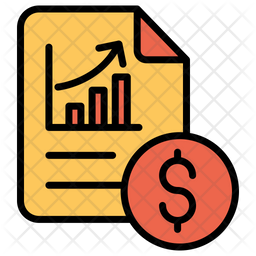
Anti-Acne Cosmetics Market by Product (Lotions & Creams, Toners & Cleansers, Mask, and Others) and End User (Men and Women)-Global Industry Analytics, COVID-19 Business Impact, and Trends, 2020 - 2029
- TBI129620
- July 24, 2020
- Global
- 132 pages
- SAC Insights
Abstract
The report covers forecast and analysis for the anti-acne cosmetics market on a global and regional level. The study provides historic data from 2016 along with a forecast from 2019 to 2025 based on revenue (USD Million). The study includes drivers and restraints for the anti-acne cosmetics market along with the impact they have on the demand over the forecast period. Additionally, the report includes the study of opportunities available in the anti-acne cosmetics market on a global as well as regional level.
According to the report, global demand for anti-acne cosmetics market was valued at approximately USD 2,083.2 Million in 2018, and is expected to generate revenue of around USD 3,618.5 Million by end of 2025, growing at a CAGR of around 8.3% between 2019 and 2025.
In order to give the users of this report a comprehensive view on the anti-acne cosmetics market we have included competitive landscape and analysis of Porter’s Five Forces model for the market. The study encompasses a market attractiveness analysis, wherein product and services segment is benchmarked based on their market size, growth rate and general attractiveness.
The report provides company market share analysis in order to give a broader overview of the key players in the anti-acne cosmetics market. In addition, the report also covers key strategic developments of the market including acquisitions & mergers, new product launch, agreements, partnerships, collaborations & joint ventures, research & development, regional expansion of major participants involved in the anti-acne cosmetics market on global and regional basis.
Acne can be described as a skin condition arising due to clogging of hair follicles with dead skin cells and oil that leads to formation of blackheads, whiteheads, pimples, and bumps. Acne occurs most commonly during puberty. Acne affects more than 50 million people every year in the U.S. alone. The treatment of acne is a long drawn process and requires constant care and medication.
Factors such as high acne prevalence, growing sale of anti-acne products on e-commerce sites, increasing permeation of internet services, increasing disposable income in developing regions, growing importance of aesthetic appearance, and rapid urbanization will act as major driving factors in the growth of global anti-acne cosmetics market. Launch of new products, use of natural ingredients, and increasing popularity of social media apps will act as an opportunity for the market players in the anti-acne cosmetics market. Nonetheless, some side-effects associated with anti-acne cosmetics, high cost of specialized products, and dearth of skilled dermatologists in low-income countries will restrict the growth of global anti-acne cosmetics market.
The global anti-acne cosmetics market has been split into product, end user, and region. Based on product, anti-acne cosmetics market has been segmented into lotions & creams, toners & cleansers, mask, and others. The lotions & creams segment accounted for the highest market share in 2018 due to high demand for body lotions and moisturizing creams, easy availability, and ease of use. The end user segment has been segmented into men and women. The women segment accounted for the highest market share in 2018 due to high use of cosmetic products among women.
Asia Pacific will be the leading region during the forecast period. High investment in research and development of anti-acne cosmetics, presence of young population, and growing popularity of acne care cosmetics in Southeast Asian countries will boost the market growth in this region. North America is expected to be the second major market. The key reasons are presence of key market players, high disposable income, and increasing acne prevalence. Europe will grow at rapid rate over the forecast time-frame due to launch of novel products. The market in Latin America will grow at a substantial rate during the estimate period. The Africa and Middle Eastern region is expected to exhibit definite progression in the anticipated time-frame.
The report also includes detailed profiles of key players such as Clinique, Neutrogena, Murad, L'Oréal, LaRochPosay, Kose, Vichy, Proactiv, and Mentholatum among others.
This report segments the Global Anti-Acne Cosmetics Market as follows:
Global Anti-Acne Cosmetics Market: By Product
Lotions & Creams
Toners & Cleansers
Mask
Others
Global Anti-Acne Cosmetics Market: By End User
Men
Women
Global Anti-Acne Cosmetics Market: By Region
North America
The U.S.
Canada
Europe
France
The UK
Spain
Germany
Italy
Rest of Europe
Asia Pacific
China
Japan
India
South Korea
Southeast Asia
Rest of Asia Pacific
Latin America
Brazil
Mexico
Rest of Latin America
Middle East & Africa
GCC
South Africa
Rest of Middle East & Africa
Table of Contents
Request Table Of Content
Click To Request Sample
Chapter 1. Preface
1.1. Report Description and Scope
1.2. Research Scope
1.3. Research Methodulogy
1.3.1. Market Research Process
1.3.2. Market Research Methodulogy
Chapter 2. Executive Summary
2.1. Anti-Acne Cosmetics Market, 2016–2025 (USD Billion)
2.2. Anti-Acne Cosmetics Market: Snapshot
Chapter 3. Anti-Acne Cosmetics Marke
| read more...



















